CES 2013: Intel focuses on Mobile as PC demand wanes
 Thursday, January 10, 2013 at 8:37PM
Thursday, January 10, 2013 at 8:37PM 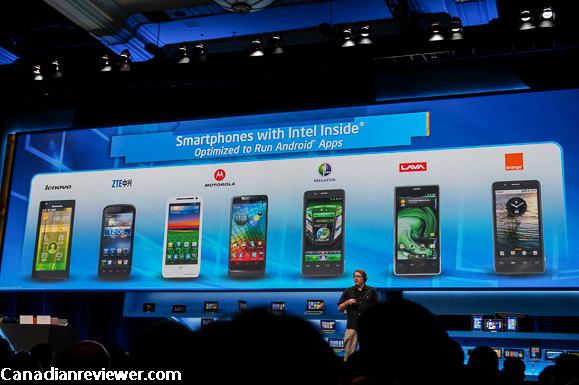
Photos by Alex Davies
Intel's been making some serious inroads to mobile and this is evident everywhere at CES 2013. As a response to shrinking PC sales and a sudden surge of competition in mobile from the likes of Samsung, Qualcomm and NVIDIA, Intel's gone all-in on their mobile strategy. Hit jump for a roundup of Intel's CES 2013 announcements.
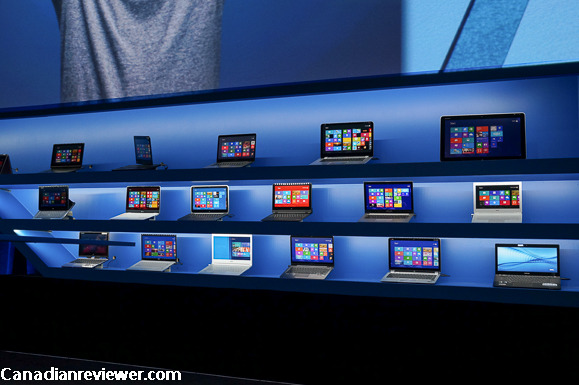
Intel's big announcements included a new smartphone platform for emerging markets, details on a forthcoming 22nm quad-core SoC for tablets, and more personal and intuitive Ultrabook devices in innovative convertible designs were outlined by Mike Bell, vice president and general manager of the Mobile and Communications Group, and Kirk Skaugen, vice president and general manager of the PC Client Group at Intel.
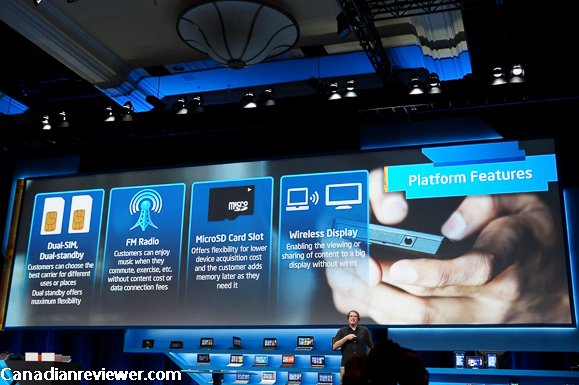
"The best of Intel is coming to a mobile device near you," said Skaugen. "We are set to deliver the biggest increase in battery efficiency in Intel's history with 4th generation Intel® Core processors, while adding broad new human interfaces to computing devices through touch, voice, facial recognition, and gesture-based interactions. We're also significantly extending the performance and power savings in Atom processors as we accelerate our mobile offerings in an unprecedented fashion in 2013."
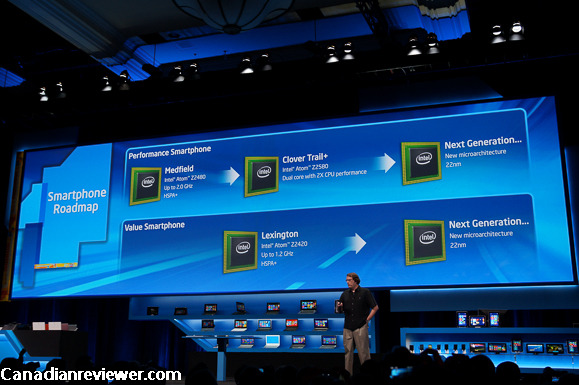
Intel Inside Smartphones
Building on the progress first detailed a year ago at CES, Intel unveiled a new low-power Atom™ processor-based platform (formerly "Lexington") and smartphone reference design, targeted at the value smartphone market segment, which industry sources predict could reach 500 million units by 2015. Customers announcing support for the platform include Acer*, Lava International* and Safaricom*.
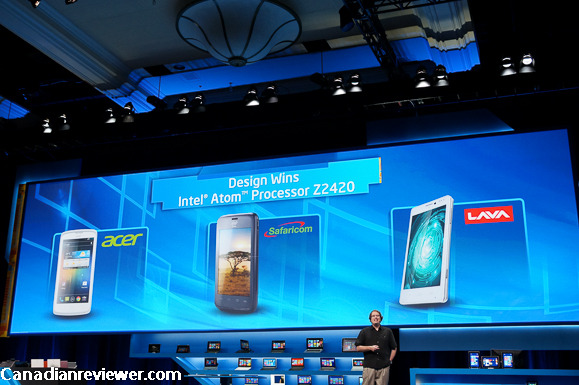
The new platform brings Intel's classic product strengths to this fast-growing smartphone market segment, including impressive performance for quick Web browsing, and a great multimedia and Android1 applications experience.
"The addition of the low-power Atom platform enables Intel to address new market segments and further rounds out our expanding portfolio of smartphone offerings," said Bell. "We believe the experience that comes with Intel Inside will be a welcomed choice by first-time buyers in emerging markets, as well as with our customers who can deploy more cost-conscious devices without sacrificing device performance or user experience."
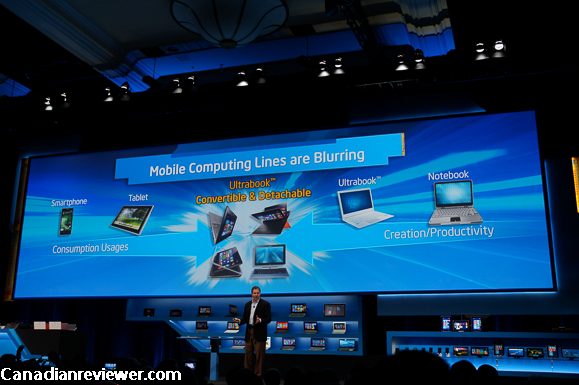
The new value offering includes many high-end features including the Intel Atom processor Z2420 with Intel Hyper-Threading Technology that can achieve speeds of 1.2 GHz, 1080p hardware-accelerated encode/decode, and support for up to two cameras delivering advanced imaging capabilities, including burst mode that allows people to capture seven pictures in less than a second in 5-megapixel quality. The platform also includes the Intel XMM 6265 HSPA+ modem that offers Dual Sim/Dual Standby capability for cost-conscious consumers.
Bell also highlighted the forthcoming Intel Atom Z2580 processor platform (formerly "Clover Trail+") targeted at performance and mainstream smartphones. The platform includes a dual core Atom processor with Intel Hyper-Threading Technology, and also features a dual-core graphics engine. He said the new platform will deliver up to two times the performance benefits over Intel's current-generation solution (Intel Atom processor Z2460 platform), while also offering competitive power and battery life.
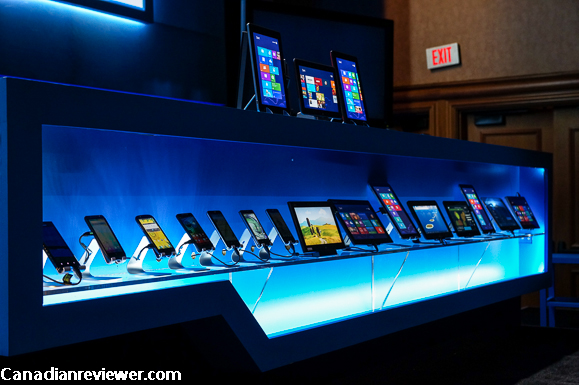
Tablet Roadmap Expanded with upcoming Quad-Core Intel Atom Processor
Speaking to a robust product roadmap and growing ecosystem of tablet and tablet convertible devices running on Intel technology, Bell reinforced the wide range of tablet designs based on the Atom Processor Z2760 running Windows2 8 now on shelves and online from OEMs such as Acer*, ASUS*, Dell*, Fujitsu*, HP*, Lenovo*, LG* and Samsung*. More tablet designs are scheduled to ship over the coming weeks. Enabling a mobile, connected and full Windows2* 8 experience, the Atom platform boasts all-day battery life and is more power- efficient than competitive offerings.
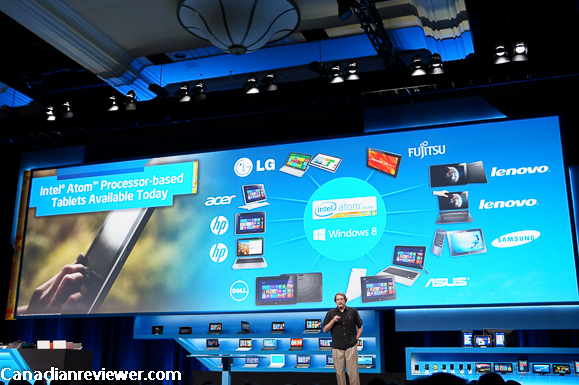
He also unveiled details about the company's next-generation 22nm Atom SoC, codenamed "Bay Trail," which is already booting and scheduled to be available for holiday 2013. The first quad-core Atom SoC will be the most powerful Atom processor to date, delivering more than two times the computing performance of Intel's current generation tablet offering. It will also include new improved integrated security offerings. These improvements will enable new experiences for business and personal use in devices as thin as 8mm that have all-day battery life and weeks of standby, all at lower prices.
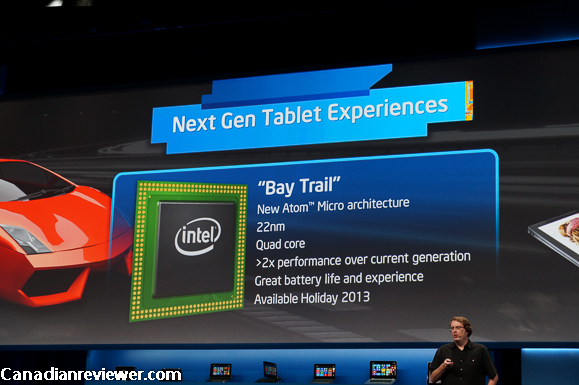
"With Bay Trail we will build on the work done with our current SoC development and accelerate very quickly by leveraging Intel's core computing strengths," Bell said. "We will take advantage of the tremendous software assets and expertise at our disposal to deliver the best products with best-in-class user experiences."





















Reader Comments